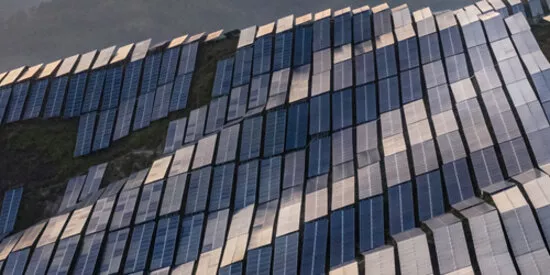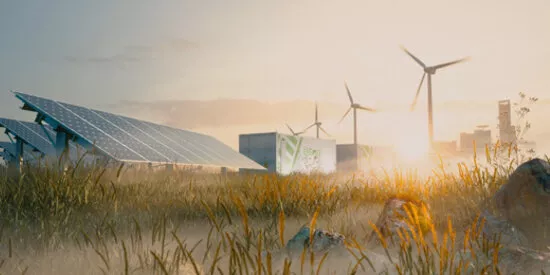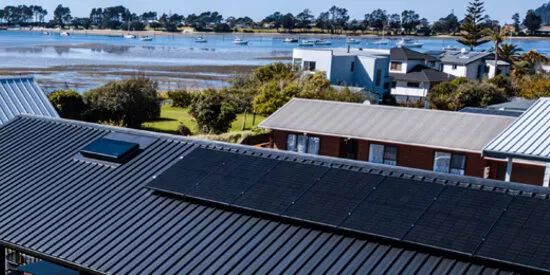
The Structural Growth of Australia’s Commercial Real Estate Market
The boom in Australian property prices is well-known. But while most of the attention has focused on residential house prices, which rose 25% last year, an equally compelling story has been unfolding in commercial real estate. And though many analysts expect a sharp drop in the residential sector over the next two years in response to rising interest rates, we expect a more nuanced softening in commercial property yields before the sector resumes the structural growth of recent years – fuelled by strong demand, low vacancy rates and international capital inflows. Let’s take these elements in turn.
Emergence of the industrial real estate market
Between 2018 and late 2021, Australia’s commercial real estate market expanded from A$235 billion to $320 billion (approximately EUR 158 billion to 215 billion), a compound annual growth rate of 5%. While office and retail properties, historically the two biggest segments, performed solidly, the stand-out growth has come in the industrial sector, and specifically in logistics. In common with much of the rest of the world, a boom in online shopping triggered by the COVID-19 pandemic has created huge demand for e-commerce distribution centres.
On top of that, the onshoring of supply chains in response to geopolitical tensions – moving from ‘just-in-time’ to ‘just-in-case’ – has led to the need for new industrial warehouses and general storage facilities. The country is also experiencing an infrastructure boom, which itself requires more depots: warehouses to store the materials to build more roads, tunnels, bridges and airports.
This strong demand has translated into annual rental growth of 10-15% for logistics properties in recent years and the lowest vacancy rates in the world: around 1% nationally and just 0.3% in Sydney. Defaults are almost unheard of. The strategic importance of a large distribution centre, often fitted out with expensive automation equipment, means its owner is likely to rationalise almost every other part of the business first in the event of financial difficulties. Proof of how tight the market has become is that real estate property groups have started to develop industrial properties ‘on spec’, in other words without a tenant already lined up – not previously a common practice in Australia.
Attracting global capital
None of this has gone unnoticed. Attracted not only by the positive demand outlook but also by traditionally higher yields than those available in Europe or the US, global capital has been flooding in: from sovereign wealth and pension funds like Singapore’s GIC, Abu Dhabi Investment Authority from Abu Dhabi and Canada’s CPP Investment Board, to giant asset managers such as Blackstone and Brookfield. Australia’s huge superannuation (pension) funds are also big players in the market.
While this has driven down yields for prime industrial/logistics properties to 3.5-4%, compared to 4-4.5% for high-quality offices in Sydney and Melbourne (and even more for shopping centres), investors are still buying. In general, many remain underweight in logistics and are trying to rebalance their portfolios. They also see the structural tailwinds supporting the sector. And having raised giant funds of their own, they simply need to deploy capital.
This is where a global financial partner like Societe Generale has a role to play by leveraging our strong relationships with both international investors and local developers. The Societe Generale Real Estate Finance team in Sydney has financed some of the biggest logistics transactions in the market, including a recent A$1.3 billion refinancing of a logistics portfolio for a Middle East sovereign wealth fund.
Will rising inflation undermine this momentum?
There is no doubt that rapid monetary tightening to combat inflation, worldwide but also in Australia, will cause real estate yields to soften as the cost of funding increases. However, we expect the correction to be relatively mild and short-lived. One reason is that demand remains strong since e-commerce and onshoring are structural trends for logistics. Meanwhile, supply remains constrained due to strict planning rules designed to prevent urban sprawl and the loss of farmland.
The picture is more nuanced for office and retail properties, where rental growth is weaker, and may even turn negative as incentives (rent-free periods) rise. In retail, for example, shopping centre owners and retail tenants are pivoting their offering towards service and lifestyle-based activities (entertainment, dining, medical and children’s play facilities to name a few) which can’t easily be disintermediated by e-commerce.
In offices, too, high-quality assets in good locations will remain in demand long after this current set of circumstances subsides. Also, certain niches continue to grow, including healthcare and medical facilities, multi-family dwellings (known in Australia as ‘build-to-rent’) and purpose-built student accommodation.
While the short-term outlook is a little more constrained, the structural growth story driving Australian commercial real estate remains unimpaired.




